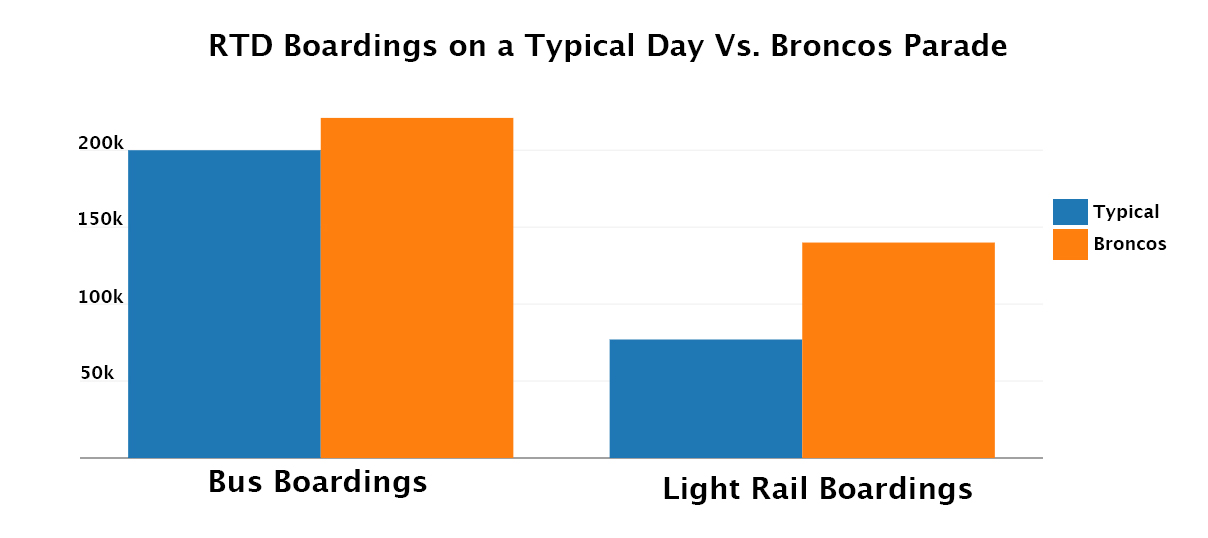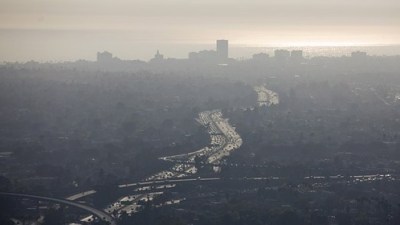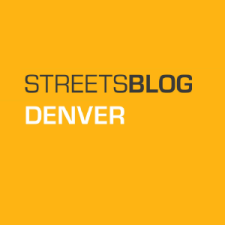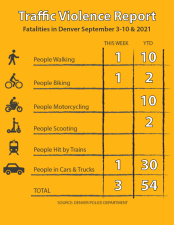What the Broncos Parade Says About Denver’s Transit System

Compared to a typical weekday, about 90,000 more people rode RTD trains and buses on the Tuesday of the Broncos Super Bowl parade. Ridership ballooned 28 percent, giving Denver’s transit system its busiest day ever with 409,000 boardings. To deal with the demand, RTD added service to several rail and bus lines, but also had to detour bus routes that crossed the parade route.
Service wasn’t flawless. Lots of passengers reported prohibitive lines at stations caused by RTD’s archaic payment system. At least one station ran out of paper tickets. Some buses simply didn’t show, causing fans to miss the noon parade. To smooth things out, RTD made all trips free for the rest of the day. (A nice gesture, but it’s pretty unfortunate for a transit system short on money to give up hundreds of thousands of dollars on its busiest day ever.)
Parade day wasn’t a normal day, but the jump in ridership demonstrated the potential of RTD’s system. We now have a pretty good sense that it can carry a lot more people than it typically does. But what would it take for 90,000 more people to ride transit every day?
That Tuesday, transit became a more attractive option because people realized it would be more convenient than driving. Government warnings about crowds of a million people clogging the streets will do that. Denver needs to make transit more convenient all the time.
One way to start would be to increase frequent service. RTD ran more trains and buses for the parade — how about doing that every day?
Right now people who live within five miles of downtown are more likely to drive than take transit, according to a study by the Downtown Denver Partnership. There are a lot of factors that go into this, but a huge reason is the lack of frequent service. Only five bus lines have service that runs at least every 10 minutes during rush hour.

As transit expert Jarrett Walker explains, frequency is one of the keys to unlocking higher ridership. Buses and trains that come more often reduce wait times. When people feel they can forget about schedules and hop on transit whenever they want, that makes the experience much more competitive with car travel.
Shorter headways (the time in between buses or trains) also make it much less stressful to transfer to other transit lines, and they act as a hedge against breakdowns or other service disruptions. If a bus has to be taken out of service, another one comes along shortly.
RTD’s strategic plan aims to grow ridership but doesn’t mention increasing service frequency. The first city-specific transit plan is expected to launch this year and will hopefully fill the gaps in RTD’s plan.
We know that many more people would ride transit in Denver if it was more convenient. What’s missing, so far, is a coherent plan to make convenient service the norm.


